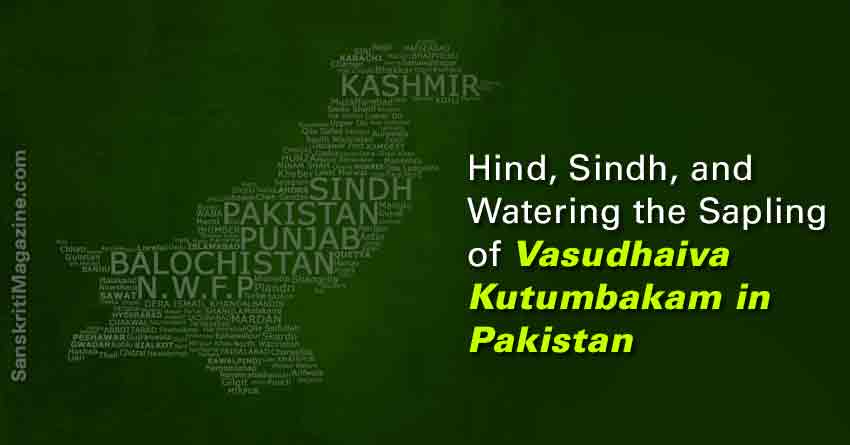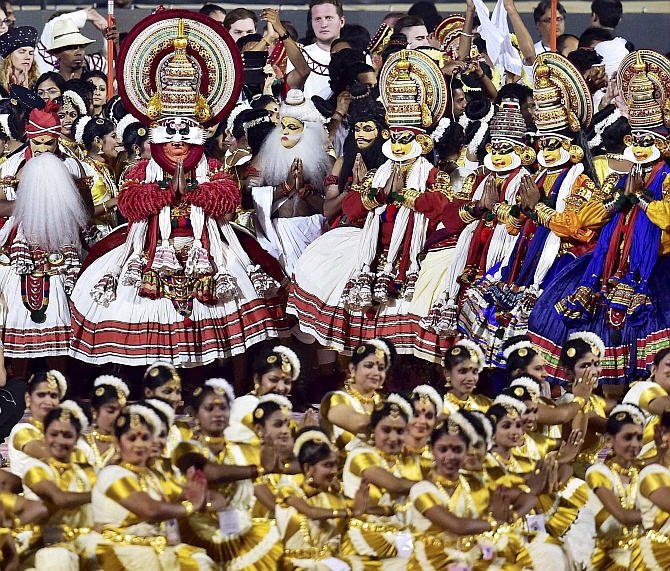March 2016 will be remembered for a long time. First, there were the horrific bomb attacks in Brussels, carried out by ISIS, and then there was the Easter Sunday slaughter in the Pakistani city of Lahore, where the intended target was the Christian community, as CNN reports. This attack was carried out by the Pakistani Taliban outfit, Jamat-ul-Ahrar. These two incidents once again demonstrated to a shocked world the nature and the goals of Islamic fundamentalism.
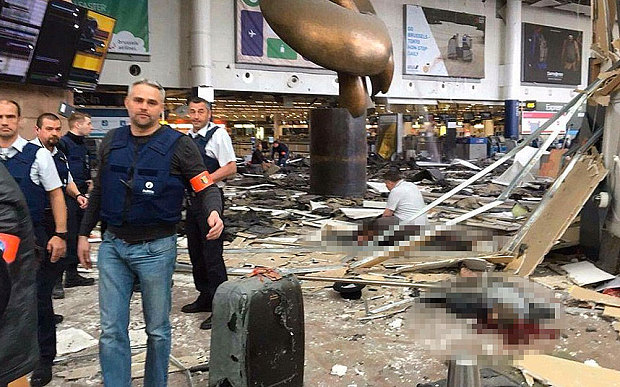 For lovers of peace, culture, and civilized living on the other hand, the month of March 2016 has gone down in history for two other very special reasons. First, the mammoth World Culture Festival held in New Delhi proved to the world that there is a large chunk of the world’s population today that buys into the idea that the entire planet Earth and its teeming humanity – comprising people of different nationalities, races, languages, ethnicities, religions, languages, and cultures – is one human family.
For lovers of peace, culture, and civilized living on the other hand, the month of March 2016 has gone down in history for two other very special reasons. First, the mammoth World Culture Festival held in New Delhi proved to the world that there is a large chunk of the world’s population today that buys into the idea that the entire planet Earth and its teeming humanity – comprising people of different nationalities, races, languages, ethnicities, religions, languages, and cultures – is one human family.
The second reason why March 2016 will go down in history is because of a small but significant development that took place in Pakistan where, in a historic move, the province of Sindh declared Holi, the ancient pre-Islamic spring festival of colors, a public holiday for all. All of these four events may be an augury of what lies in the future as world changes accelerate in this century.
The World Culture Festival that took place 11-13 March 2016 was of tremendous global significance. It brought together 3.75 million people of all races, religions, nationalities, languages, and cultures from 155 countries to New Delhi who assembled in one place to meditate together and celebrate diversity, peace, music, dance, human values, and the unity and brotherhood of all religions and races.
The theme of the festival was Vasudha iva kutumbakam or Vasudhaiva Kutumbakam, an ancient Sanskrit formulaic phrase from the Maha Upanishad which literally means the entire world is truly just one family. (“The world is a family/One is a relative, the other a stranger/Say the small minded/The entire world is a family/Live the magnanimous,” goes one ancient verse.) Showcasing the planet’s rich cultural and human diversity, WCF 2016 emphasized the unity of all of humanity as one human family.
The main venue on the banks of the Yamuna had a 7 acre stage on which over 37,000 artists from all over the world gave live performances. Besides the over 3.75 million people representing 155 countries who attended the event, groups and individuals at 767,436 locations in 188 countries viewed the webcast according to the report of the webcast partner, Livestream. Social media partners reported 1.4 billion impressions on Twitter and 30 million engagements on Facebook during the event. Just one of the many TV channels televising the proceedings reported a viewership of 16 million for itself.
The initiative was a spiritual and cultural extravaganza unlike any other witnessed before in history. The three day festival was marked by the convergence of artistes and performers, spiritual leaders, politicians, business leaders, and peacemakers from across the world who joined each other on a common platform to celebrate the uniqueness as well as the unity and commonality of all the cultures of the world and foster a deeper understanding between people of different faiths, races, nationalities, and backgrounds.
It is a testament to the great work of the Art of Living in Pakistan, carried out mostly by Pakistani volunteers, that Pakistan was represented by some notable delegates like Senator Sherry Rehman, Pakistan’s youngest Member of Parliament Uzair Khan, and Shahnaz Minallah, a teacher of Sudarshan Kriya yoga and meditation.
On the final day of the global cultural extravaganza, the Pakistani dance contingent performed a high octane routine which they named Punk Sufi. The dance was set to the tunes of Arif Lohar’s “Jugni ji,” touted as the most viewed Pakistani song on YouTube. The routine comprised performers dressed in white and green waving the Pakistani flag on stage, while others moved to the tunes of “Sufi trance” which was interspersed with poetry that talked about “harmony and oneness, love and peace,” as the Indian Express reports. While the tune and the song were catchy, the Punk Sufi dance itself basically consisted of seven dancers in colored robes who furiously jiggled and twirled, with the rest of the dancers either standing still, wildly flailing Pakistani flags, or running helter-skelter with the flags in their hands. The front rows at the WCF in particular seem to have loved it.
The segment can be viewed on YouTube here (5:03:05 in the recording). Sri Sri Ravi Shankar took the microphone as soon as the Pakistani performance ended. Speaking in Hindi, he first congratulated the performers and then exhorted them to take this very message of peace back to Pakistan: “Yahi sandesh le ke jaeeye ap vahan par, aur shanti-aman ka sandesh le ke jaeeye yahan se.” The second irony, equally obvious to the keen observer, was that the Pakistani dance delegation was perhaps the only one, out of all the countries, that felt compelled to integrate the act of brandishing Pakistani flags into its dance routine. One wonders if this was done because they cannot be seen abandoning the core ideology of Pakistan back home. At any rate, the Pakistani contingent was showered with tremendous love and appreciation. According to Shahnaz Minallah, “We were greeted with a standing ovation and many of us had tears in our eyes. It was surreal.”
Pakistan’s participation in the World Culture Festival is heartening in and of itself because it shows that there is a constituency within Pakistan, however small and voiceless it may seem right now, that responds to the call of vasudhaiva kutumbakam. It is also reasonable to suppose that at least some of the Pakistani youth, artists, and leaders who came to celebrate universal brotherhood on a global stage and discovered an international audience that openly acknowledges the concept that all of humanity is one family will likely take the idea back to their circles of influence with renewed vigor.
The second significant reason why March 2016 will go down as a special month for lovers of cultural fiestas is because of a new development that took place in Pakistan, where the province of Sindh, in a historic and contextually brave and progressive move, declared the ancient spring festival of colors – the festival of Holi – a public holiday for all the people in the province, in spite of the demand from some quarters that the holiday be limited to the Hindu community only. A fresh provincial government notification was reissued and confirmed that the declaration of a public holiday for the whole of Sindh stood valid despite the opposition from various Islamist quarters and the earlier confusion.
It is interesting that while Pakistani Punjab has banned Basant, another Hindu/native pre-Islamic festival that till a few years ago used to be observed with great gusto in Lahore, Sindh has actually reinstated Holi on its ancient soil by instituting it as an official state holiday. This is a miracle in itself and it confirms once again that there is a constituency within Pakistan that is beginning to open up to its own pre-Islamic roots.
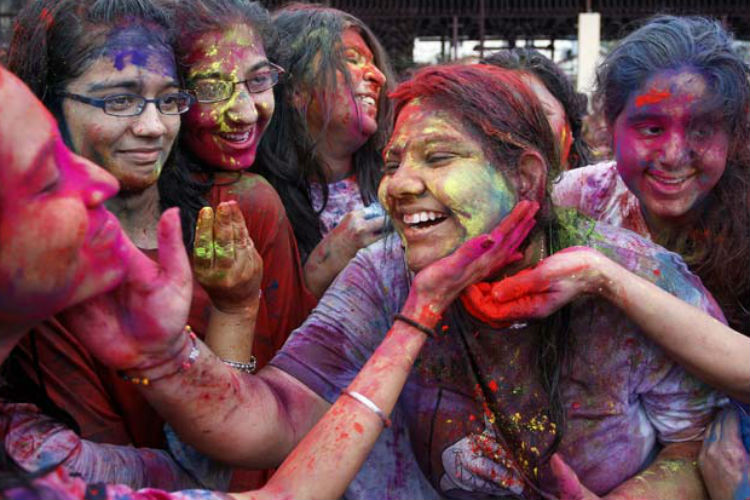 Out of all festivals, Holi is the expression of vasudhaiva kutumbakam par excellence. Though associated with Hinduism and endowed with various symbolic meanings and levels of interpretations, Holi is basically an expression of “the spirit of universal brotherhood that transcends color, creed, caste or social status,” as Dr. Ilmana Fasih, an Indian Muslim married to a Pakistani, states in her brilliant article titled “You can play Holi too, even if you are Muslim,” in which she explores the importance that Holi and its deeper symbolisms were accorded by Muslim Sufi masters and poets like Amir Khusrow, Bulle Shah, and Shah Niyaz, as well as Mughals like Akbar, Jahangir, and Bahadur Shah Zafar, who appreciated and incorporated the festival and idiom of Holi in art, poetry, music, governance, and even spiritual quest.
Out of all festivals, Holi is the expression of vasudhaiva kutumbakam par excellence. Though associated with Hinduism and endowed with various symbolic meanings and levels of interpretations, Holi is basically an expression of “the spirit of universal brotherhood that transcends color, creed, caste or social status,” as Dr. Ilmana Fasih, an Indian Muslim married to a Pakistani, states in her brilliant article titled “You can play Holi too, even if you are Muslim,” in which she explores the importance that Holi and its deeper symbolisms were accorded by Muslim Sufi masters and poets like Amir Khusrow, Bulle Shah, and Shah Niyaz, as well as Mughals like Akbar, Jahangir, and Bahadur Shah Zafar, who appreciated and incorporated the festival and idiom of Holi in art, poetry, music, governance, and even spiritual quest.
“Jahangir, the romantic art connoisseur is documented to have played Holi with his queen, Nur Jahan, in his palace and called it Eid-e-Gulabi,” as Dr. Fasih explains. Emphasizing that these “celebrations of culture are all about love and have no place for hate and discrimination,” Dr. Fasih’s article encourages the people of Pakistan to celebrate Holi “with an open mind, and more importantly, an open heart!”
Sri Sri Ravi Shankar, the moving force behind the World Culture Festival, explains the significance of Holi thus:
“Holi is the festival of colors. This is one festival that from centuries has been uniting people of all classes, castes, age-groups and generations. Everyone comes together and celebrates the oneness of humanity, and that is the message of Holi. If you leave a group of kids in a room from all different backgrounds (rich, poor, intelligent, not-so-intelligent), do you know how they’ll play? They will play without finding any distinction between themselves. They will play together.
Holi is a festival which unites people of diverse backgrounds and professions. Society divides people, sometimes on the basis of profession, sometimes on the basis of gender, sometimes based on age-group. If there is a Chamber of Commerce meeting, only business people go. For the Lions club meeting, only people from the Lion club will go, Rotarians won’t go. So like this, the society has different sections. Holi is a time where we break all the barriers of gender, nationality, race, religion; from the elderly to the young, you hug everybody, and put colors on them. It’s a unifying festival, a unifying celebration.”
In a world where we see entire societies riven by prejudice, fanaticism, violence, divisions and disunity, it is human unity, harmony in diversity, and celebration of culture that we need more of. Holi is therefore a perfect choice for Pakistan. While ancient traditions like Holi – the festival of colors, and Diwali – the festival of lights, were erased from the Pakistani national and public space after Partition, they are nevertheless native to the soil of Pakistan and are a part of the native genetic memory and ethos. The making of Holi as a public Sindhi holiday is thus an extremely positive step and the province and people of Sindh deserve to be mightily congratulated and praised for this welcome step, this revolutionary inclusion. The roster of public holidays and festivals of a multicultural Pakistan will nevertheless be incomplete if Easter and two other holidays, namely Diwali and Guru Nanak Jayanti, both of which are native to the land, are still missing from the list.
Interestingly, the news that Sindh, a Pakistani province, has made Holi a public holiday for all the people of the province, comes in the immediate aftermath of the World Culture Festival. This may just be a coincidence. One hopes however that the reverberations of the World Culture Festival will inspire more and more people across the world to transcend narrow, artificial boundaries and identities which prevent humans from experiencing who they truly are as humans. As HRH Sheikh Nahyan Bin Mubarak Al Nahyan, the Minister of Culture, Youth and Community Development of the United Arab Emirates, an attendee at the World Culture Festival said,
“Today, my colleagues and I are proud to be a part of you and the One World Family. Like you, I hope that one day our family will also embrace the entire population of the world, and the One world family will be truly complete when everyone everywhere finally understands the moral necessity of a culture of knowledge, understanding, kindness and respect.”
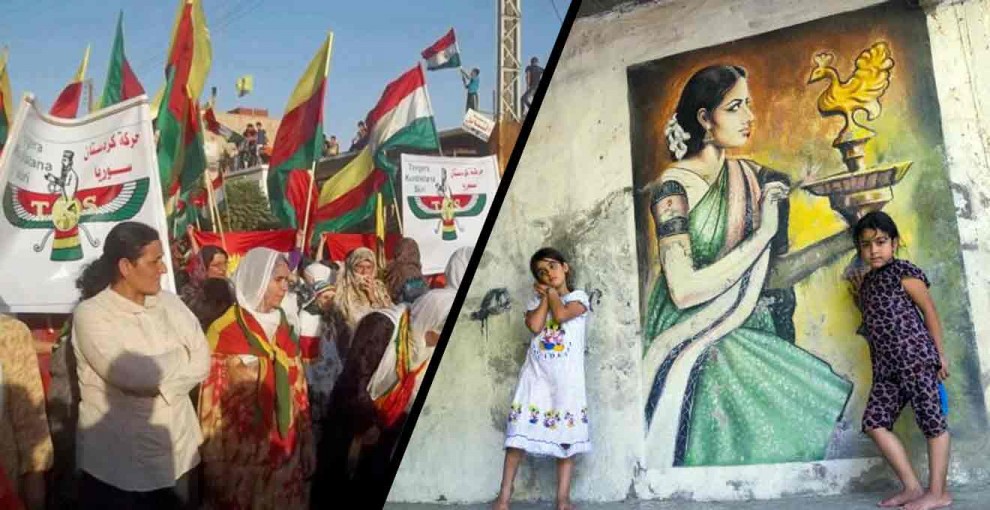 It is clear that even in the Middle East there is a realization happening in some quarters at the highest levels about the idea of vasudhaiva kutumbakam and “the moral necessity of a culture of knowledge, understanding, kindness and respect” for the entire population of the world, as the WCF message of His Royal Highness Sheikh Nahyan Bin Mubarak Al Nahyan indicates.
It is clear that even in the Middle East there is a realization happening in some quarters at the highest levels about the idea of vasudhaiva kutumbakam and “the moral necessity of a culture of knowledge, understanding, kindness and respect” for the entire population of the world, as the WCF message of His Royal Highness Sheikh Nahyan Bin Mubarak Al Nahyan indicates.
Many observers feel that Pakistan, born out of India, is unlikely to last long in its present form. Some analysts like Syed Ata Hasnain believe that Pakistan is headed towards implosion and that international support – financial, military, and ideological – from countries China, USA and Saudi Arabia, for example, is what is keeping Pakistan together. Similarly, Tarek Fatah, a renowned Canadian journalist and an expert on Pakistani politics and history who has recently drawn urgent attention to Pakistan’s ongoing Baloch genocide, also considers Pakistan to be a failed state and expects it to balkanize in our own lifetime. If this happens, it is certain that Sindh, where the Islamization of India (or Hind) began in 711 A.D., will become an independent country and will refuse to remain yoked to Muslim West Punjab. It can be expected that there will be many people who will want to return to their original ancestral roots, just like the Kurds of northern Iraq who are now returning to Zoroastrianism in significant numbers.
One of the reasons why India has faced constant jihad and has constantly gotten diminished in size and psyche since 711 A.D. – the year of the Arab conquest of Sindh by Mohammad Bin Qasim – is because Indian civilization did little to take the knowledge of dharma and philosophical and cultural concepts like vasudhaiva kutumbakam westwards after the Mauryan period. Similarly, the eastward communication of Indic philosophy and civilizational values which had been so effectively carried out, stopped after the Chola period as large parts of Hindu South East Asia yielded to Islam. Indic civilizational space has constantly shrunk since 711 A.D., and today what remains, i.e. present day India, is just a moth-eaten central core.
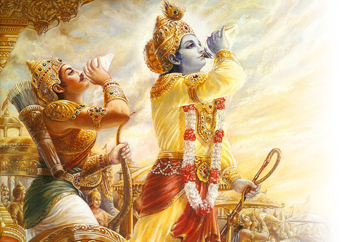 Meanwhile, with jihad going global and all apocalyptic, and rapid demographic changes in border regions underway, present-day India, just like Europe, has never been as vulnerable to jihad internally as it is now as. What the world needs now is once again for India to become a powerful emitter of its message of wisdom and dharma rather than a passive receiver of failed, aggressive, external civilizational influences. India, home to one-sixth of humanity, needs to become an equal dialogue partner and an equal influencer in the shaping of the culture and the destiny of a globalized humanity. Doing so, it will also protect itself. Dharmo rakshati rakshitah!
Meanwhile, with jihad going global and all apocalyptic, and rapid demographic changes in border regions underway, present-day India, just like Europe, has never been as vulnerable to jihad internally as it is now as. What the world needs now is once again for India to become a powerful emitter of its message of wisdom and dharma rather than a passive receiver of failed, aggressive, external civilizational influences. India, home to one-sixth of humanity, needs to become an equal dialogue partner and an equal influencer in the shaping of the culture and the destiny of a globalized humanity. Doing so, it will also protect itself. Dharmo rakshati rakshitah!
As the World Culture Festival and the spirit behind Holi reveal, India, with its rich cultural heritage, philosophy, and wisdom has so much to offer to the world. It is also true that while Indian civilization has been the time capsule that has preserved the most ancient and uplifting knowledge of sanatan dharma, the wisdom, ideas, and ideals that radiate therefrom are universal and belong to all of humanity. Spreading the message and wisdom of vasudhaiva kutumbakam and other principles radiating from sanatan dharma is a need too important to be just left to volunteers at a time when the entire world faces the prospect of devastation from jihad. It is now the duty of the Government of India to make sure that an understanding of the knowledge and the possibility of sanatan dharma reaches each and every place on Earth, including Pakistan and the rest of the Muslim world. Moreover, India also needs to understand that this wisdom and education, disowned and neglected in its own homeland for far too long, has to be taught within and without. It has to be taught both at home and abroad. The Home Ministry, the Ministry of Education, and the Ministry of External Affairs should all look into this. The sharing of the treasures contained in sanatan dharma can only make the world a better place for everybody.
~ Dr. Shonu Nangia,
Associate Professor of Foreign Languages, Department of Arts, English and Humanities, Louisiana State University at Alexandria

